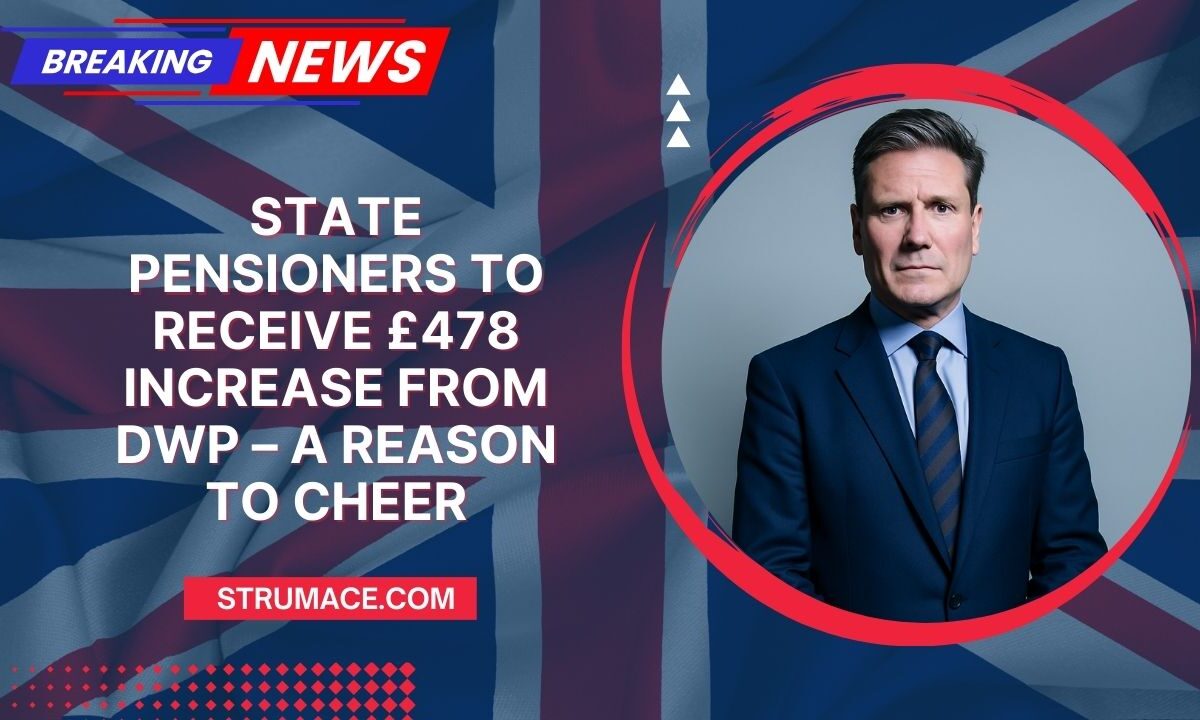Millions of UK state pensioners have a reason to smile: the Department for Work & Pensions (DWP) is confirming a £478 annual increase in pension payments starting April 2026.
This update comes thanks to the triple lock system and calibrated inflation forecasts from the Bank of England. Here’s everything you need to know.
What’s Driving the £478 Increase?
The triple lock guarantees pensions rise by whichever is highest: CPI inflation, average earnings growth, or 2.5%.
With inflation forecast to reach 4% in September 2025, this forms the basis for the upcoming State Pension boost.
| Factor | Annual Increase Outcome |
|---|---|
| September 2025 Inflation | Approx. 4% increase |
| New State Pension (2025/26) | Currently £11,973 annually |
| Projected 2026/27 Increase | +£478 per year (~£9/week) |
| New Estimated Annual Pension | ~£12,451 |
This increase not only helps pensions keep pace with rising prices but also reflects the government’s pledge to maintain pensioner income amidst economic pressures.
What The Boost Mean for Pensioners
- Extra Income: The £478 lift translates to about £9 more per week, providing crucial help with everyday costs like food, heating, and prescriptions.
- Improved Purchasing Power: In light of ongoing inflation, this boost helps offset everyday cost-of-living challenges.
- Policy Significance: Many campaigners argue the triple lock remains vital to prevent pensioner poverty and promote dignified retirement living.
However, critics warn the increase may not sufficiently keep up with rising household expenses, even though it represents a meaningful real-term gain.
Implications and Cautions
While the increase is welcome, there are potential downsides:
- Tax Threshold Crossing: The new annual pension of approximately £12,451 brings many pensioners close to the £12,570 personal income tax allowance, raising the risk of paying tax for the first time.
- Fiscal Impact: Analysts project this uplift will cost the government billions, putting extra pressure on budgets already strained by labor and social spending commitments.
- Triple Lock Debate: Questions remain about the long-term affordability of the triple lock and whether earning-based uprating alone might be more sustainable.
Still, advocates emphasize its role in combatting income inequalities among older individuals surviving on fixed incomes.
What Pensioners Should Do Now
- Review Tax Code: Ensure your coding reflects the boost—especially if your total income crosses into taxable territory.
- Check Eligibility: Some may benefit from additional support such as Pension Credit if income remains modest.
- Budget Smart: Factor the increase into your planning to manage rising costs more effectively.
- Stay Alert for Updates: Monitor your DWP or HMRC notifications to confirm the new amount and timing.
State pensioners are set to receive a meaningful £478 uplift in 2026, justified by inflation projections and secured through the triple lock safeguard.
While this does not solve all retirement funding challenges, it’s a welcome step in supporting older individuals as living costs climb.
As you prepare for the change, stay alert to your pension updates, check your tax standing, and plan to make the most of this essential financial boost.
FAQs
When will the £478 increase be applied?
April 2026, aligning with standard annual pension uprating practices.
Will I pay tax on this higher pension?
Possibly. If total income exceeds £12,570, basic rate tax may apply to the portion above the threshold.
Why is this increase happening now?
Because of the triple lock mechanism and a projected 4% inflation rate in September 2025, one of the three components used to calculate pension increases.




